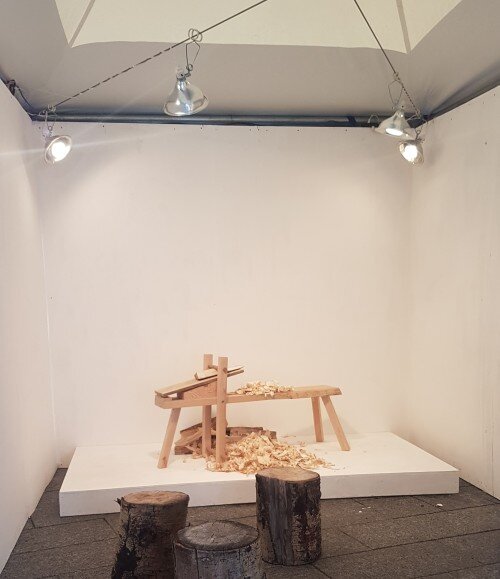Working for The Works is a lot of work. Especially in the week and half leading up to festival. You learn a lot about things you weren’t expecting to learn a lot about. Like wood, screws, prerequisites for Instagram swipe links and Verified status, and office acronyms. Problem solving becomes second nature to you, or you at least learn how to hum and haw in ways that inspire others in their problem solving. Production interns are instrumental in preparing for, setting up, and running a free art festival. You contribute to an awesome experience for so many people, but the week leading up to festival feels less than awesome. There are many things you learn through experience, in-class sessions and conversations with your peers. However, there are some things you can not truly grasp until you experience them. The pre-festival scramble is a great indicator of things you did not know that you did not know, or that you did not know how best to prepare for. So, I have put together a list of a three key festival survival tips to help you prepare:
1. Whether it’s rain or shine, prepare for the weather.
Who knew just how blinding white paint is when it’s reflecting full sun? You did not until you were squinting your way through a paint-job on a FTP (I still don’t fully know what that stands for, but I know it’s a wall…). Painting white walls or plinths or other miscellaneous objects in the glaring sun is a lot less painful with sunglasses and sunscreen. Sunscreen is vital, so you don’t get crispy fried working outside in the sun for most of the day… and you are outside a lot.
Rain can also be a pain, but for other reasons. It makes you cold and damp if you’re not dressed for it. There is a significant difference between water resistant and water proof. I hope you don’t learn this the hard way. Having a good rain jacket on hand is very useful, but also grab a few extra layers for underneath. Maybe some water repellant pants while you’re at it. You never know when you’ll be lying beneath an uncovered stair case in the pouring rain to secure the lower steps.
2. Tell your friends, family and even your dog that you might not be able to reliably be there for them.
Everyone in at the Works gets in a lot of overtime leading up to and during the festival. Some projects take a lot longer than anticipated or complications arise, so you need to be prepared to stick around and help your team. It’s inevitable that this overtime gets in the way of your social life and that’s okay. Be aware that you might have to cancel or postpone plans so just keep the people in your life updated. Tell your mom you’ll be late for dinner, tell your friends you might need to hang out another day, tell your pet that you value and love them unconditionally but they might have to eat a little later in the evening.
3. Take care of yourself.
You are a human being and you have basic needs. Fulfill them. Eat enough food, drink enough water, get enough sleep. It’s easier said than done, but making sure you’re well rested and energized makes the long work days so much easier to get through. Bring snacks to fend off the hunger and stabilize your energy levels but try to avoid snacks that are high in sugar so your energy doesn’t crash an hour after eating them. If you have the capacity to do so, bring some snacks to share with your team. You’ll help them stay functioning and you’ll all be happy together.
Those were just a few tips that are useful and applicable to every festival since the specific festival requirements change every year. They’re mostly common sense, but sometimes stress makes common sense less common. In those kind of stressful situations, little reminders can be useful.
_____________________________
About the author: Callum McKenzie is a visual communication design and printmaking student at the University of Alberta. He has shown work at various galleries and exhibitions including the Change Climate exhibition and a group show at Coral Plaza in his hometown of Edmonton. Callum explores the intersections of masculinity, queerness and emotional expression through his print work. He hopes to highlight alternative and healthy forms of masculinity. In addition to design and printmaking, Callum practices his drawing skills and obsesses over paper. He combines his passions in the practice of bookbinding. To see some of his work, check out his Instagram profile, @humdrum_and_callum.









